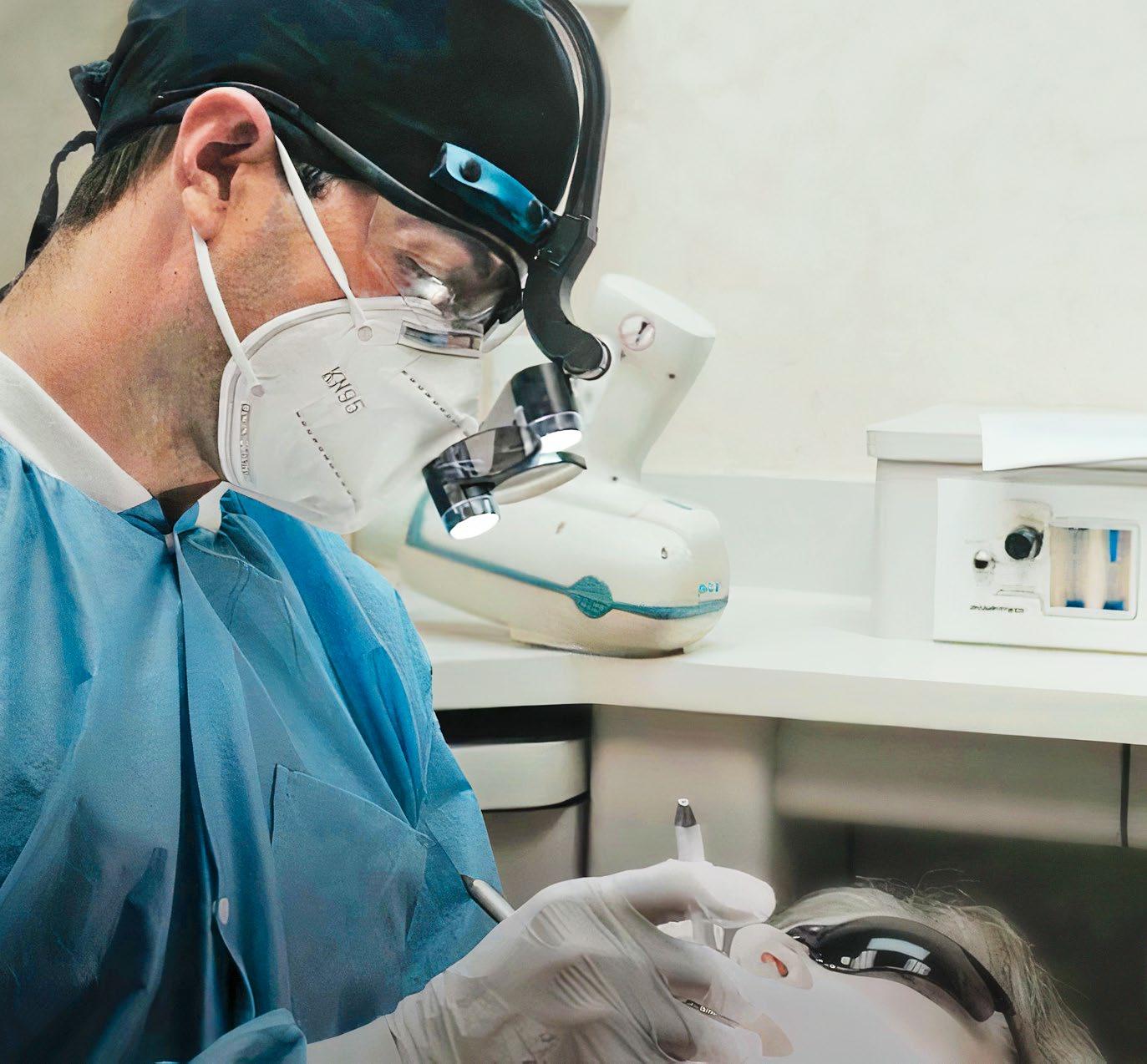
4 minute read
“The patient’s experience is key for us.”
Dr. Drew Rossi | USA Periodontal Health Professionals LLC, Houston
Interview conducted by Verena Vermeulen
For patients it’s not only the outcome that matters but also the convenience. Dr. Drew Rossi gave us insights into how he educates patients, why he switched to non-autologous grafts and why he invests time in lecturing and mentoring.
If you need medical or dental treatment, are you someone who wants to know everything about the therapy, or are you someone who completely trusts your health care professional?
Dr. Rossi: I tend to be very exacting – that’s my personality. I tend to research things, talk with my healthcare colleagues and educate myself.
Do you Google diagnoses and treatments?
Sometimes. But what I really like to do is talk to colleagues. I don’t think you can trust everything you see on the internet. How about your patients – do they have specific expectations?
A lot of them do. Many of our pateints are referrals. Often their primary care dentists have already explained what I do and what I will probably recommend. And many of them are well educated professionals themselves. I don’t like them YouTubing treatments because this tends to frighten them away. But they do it anyway.
Could you give an example?
The Pinhole Technique is very well marketed in the US. A lot of people come and request this treatment, because they saw it on TV or on the internet. It’s the same
with other soft tissue augmentation procedures. I am always honest with my patients. If I am not convinced of a procedure or biommaterial because it is not backed by research, I don’t offer it.
What is key for you when you explain treatments to your patients?
To be aware of their wishes and how they respond. We can talk about scientific literature or the amount of keratinized tissue needed, but they tend not to respond to that. Most patients respond to emotions, like before and after pictures. For example, if they are coming in for soft tissue treatments, they want to look better, and they want to reach this goal with a convenient procedure. Sometimes they are also afraid. Fear is a frequent problem in dental offices, so we have to deal with this. The patient’s experience is key for us.
“What matters for the patients, apart from the treatment outcome, is the time they spend in the operation chair and post-operative pain.”
Patient reported outcome measures are becoming more and more relevant. Do you measure patient satisfaction systematically?
When we do research we do – to quantitatively measure their opinions. But in our daily practice we don’t. We care a lot about patient experience, even if we don’t analyze it in a scientific way. Patient satisfaction with treatments and outcomes drives our referrals and helps us attract more patients by word of mouth.
Has your approach changed over time?
Yes, definitely. What matters for the patients, apart from the treatment outcome, is the time they spend in the operation chair and post-operative pain. When I started practicing, I used autologous tissue every single time because it was the gold standard. But when I moved into private practice I realized that patients tend to be way more satisfied when we use non-autologous tissue, and we are still getting excellent results. Nowadays I tend to use more non-autogenous tissue and offer a palate free approach.
Sometimes regenerative treatments do not aim at correcting a defect but rather preventing tissue loss or decreasing vulnerability. In the US this is called “phenotype modification therapy.” Are these proactive and preventive regenerative treatments more difficult to sell and explain?
Yes, because patie0nts do not typically ask us for this kind of therapy. We educate our referral base on such treatments and patient cases. Often patients don’t even realize that they have an issue. Also, when general dentists graduate from dental school they are not aware of, for example, the importance of keratinized tissue. If it is hard to sell this idea to dentists, it is even harder to sell it to the public.
These treatments might take an initial investment but pay off over time...
If we are doing a large implant case, we know that augmenting the keratinized tissue is going to increase long-term success. We are performing phenotype modification therapy to protect our results. We don’t want to fix peri-implantitis or peri-implant mucositis later on for free.
What is the future of regenerative dentistry?
I am sure that preventative therapies will become more and more relevant, but this involves a lot of patient education. And the focus on patient reported outcome measures will increase, also in the literature. We will not be focusing on a half millimeter soft tissue gain but rather patient experience and comfort.
What are the biggest challenges in this respect?
One hundred percent education. After finishing dental school most dentists have only basic knowledge. A topic like phenotype modification is covered very briefly, if at all. Therefore, we must educate our fellow colleagues, for example, at congresses or through mentoring. I lecture for my referral base and continually mentor. Education does not stop with school.










